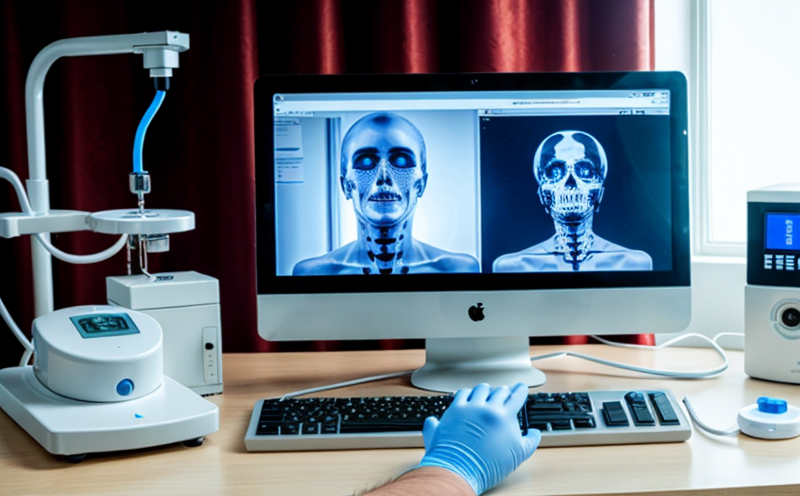Medical Device Testing: Ensuring Safety and Effectiveness through Rigorous Evaluation
The development of medical devices has revolutionized healthcare, offering innovative solutions to diagnose, treat, and manage various medical conditions. However, with the increasing complexity and sophistication of these devices, ensuring their safety and effectiveness is crucial. Medical device testing plays a vital role in this process, providing critical insights into a devices performance, reliability, and usability.
Medical device testing involves a series of evaluations that assess a devices ability to meet regulatory requirements, industry standards, and user expectations. This testing process typically includes several stages, each with specific objectives and protocols. The primary goal of medical device testing is to identify potential issues or defects that could compromise patient safety or device performance. By identifying these issues early on, manufacturers can take corrective action, ensuring that their devices are safe for use in clinical settings.
The regulatory landscape governing medical device testing is complex and multifaceted. Regulatory agencies such as the US FDA, European Medicines Agency (EMA), and Health Canada oversee the approval of medical devices through a process known as premarket approval or clearance. Manufacturers must submit extensive documentation, including test data, to demonstrate their devices safety and effectiveness.
Testing Methods:
Medical device testing involves various methods and techniques, each designed to assess specific aspects of device performance. Some common testing methods include:
Biocompatibility Testing: Evaluates a devices potential for adverse biological reactions or interactions with living tissues.
Examples:
- Extractable and leachable (EL) studies
- Cell culture assays
- Animal toxicity tests
Mechanical Testing: Assesses a devices mechanical performance, including durability, stability, and corrosion resistance.
Examples:
- Tensile strength testing
- Compression testing
- Corrosion testing
Additional Considerations:
In addition to the above testing methods, medical device manufacturers must also consider other factors that may impact device performance. These include:
User-Centered Design: Involves evaluating a devices usability and user experience to ensure that it meets the needs of healthcare professionals and patients.
Examples:
- Usability studies
- User interface design
- Training programs for healthcare professionals
Labeling and Instructions for Use (IFU): Ensures that devices are accurately labeled and accompanied by clear instructions for use, reducing the risk of user error.
Compliance with Regulations:
Medical device manufacturers must comply with a range of regulatory requirements, including:
21 CFR Part 820: FDAs Quality System Regulation
ISO 13485: International standard for medical devices quality management systems
EU Medical Device Regulation (MDR): European Unions regulation governing medical devices
Manufacturers must demonstrate compliance with these regulations through documentation and testing, ensuring that their devices meet strict standards for safety and effectiveness.
QA Section:
Q1: What are the primary objectives of medical device testing?
A1: The primary objectives of medical device testing include identifying potential issues or defects that could compromise patient safety or device performance. Manufacturers must demonstrate compliance with regulatory requirements, industry standards, and user expectations through rigorous evaluation.
Q2: Can you explain the difference between premarket approval (PMA) and 510(k) clearance?
A2: Premarket approval (PMA) is a process by which FDA grants permission to market a device that has been deemed safe and effective for its intended use. The PMA process typically requires extensive testing, documentation, and review before a device can be approved. 510(k) clearance, on the other hand, involves demonstrating substantial equivalence between a new device and an existing device already cleared by FDA.
Q3: What are some common testing methods used in medical device testing?
A3: Common testing methods include biocompatibility testing (e.g., extractable and leachable studies, cell culture assays), mechanical testing (e.g., tensile strength testing, corrosion testing), and user-centered design (e.g., usability studies, user interface design).
Q4: How does regulatory compliance impact medical device testing?
A4: Regulatory compliance is critical in medical device testing. Manufacturers must demonstrate compliance with regulations such as 21 CFR Part 820, ISO 13485, and EU MDR through documentation and testing. Compliance ensures that devices meet strict standards for safety and effectiveness.
Q5: Can you explain the role of user-centered design in medical device testing?
A5: User-centered design involves evaluating a devices usability and user experience to ensure that it meets the needs of healthcare professionals and patients. This includes conducting usability studies, designing intuitive user interfaces, and developing training programs for healthcare professionals.
Q6: What is the significance of labeling and instructions for use (IFU) in medical device testing?
A6: Accurate labeling and clear IFU are essential to ensure that devices are used safely and effectively. Manufacturers must provide detailed information about a devices intended use, handling, and maintenance requirements to reduce the risk of user error.
Q7: Can you discuss the importance of maintaining accurate records in medical device testing?
A7: Accurate record-keeping is critical in medical device testing, as it provides a transparent and auditable trail of documentation. Manufacturers must maintain comprehensive records of all testing, including protocols, results, and corrective actions taken.
Q8: How does medical device testing impact the development cycle?
A8: Medical device testing has a significant impact on the development cycle. Manufacturers must incorporate rigorous evaluation into their design and development process to ensure that devices meet regulatory requirements and user expectations.
Q9: Can you explain the role of third-party testing in medical device testing?
A9: Third-party testing involves using independent laboratories or testing organizations to conduct evaluations of a devices performance, reliability, and usability. This can be beneficial for manufacturers who lack in-house resources or expertise.
Q10: What are some common challenges faced by manufacturers in medical device testing?
A10: Manufacturers often face challenges related to resource constraints, regulatory complexity, and the need to balance rigorous evaluation with tight development timelines. Additionally, ensuring compliance with ever-evolving regulations can be a significant challenge.
By understanding the complexities of medical device testing, manufacturers can ensure that their devices are safe for use in clinical settings while meeting regulatory requirements and user expectations.

































